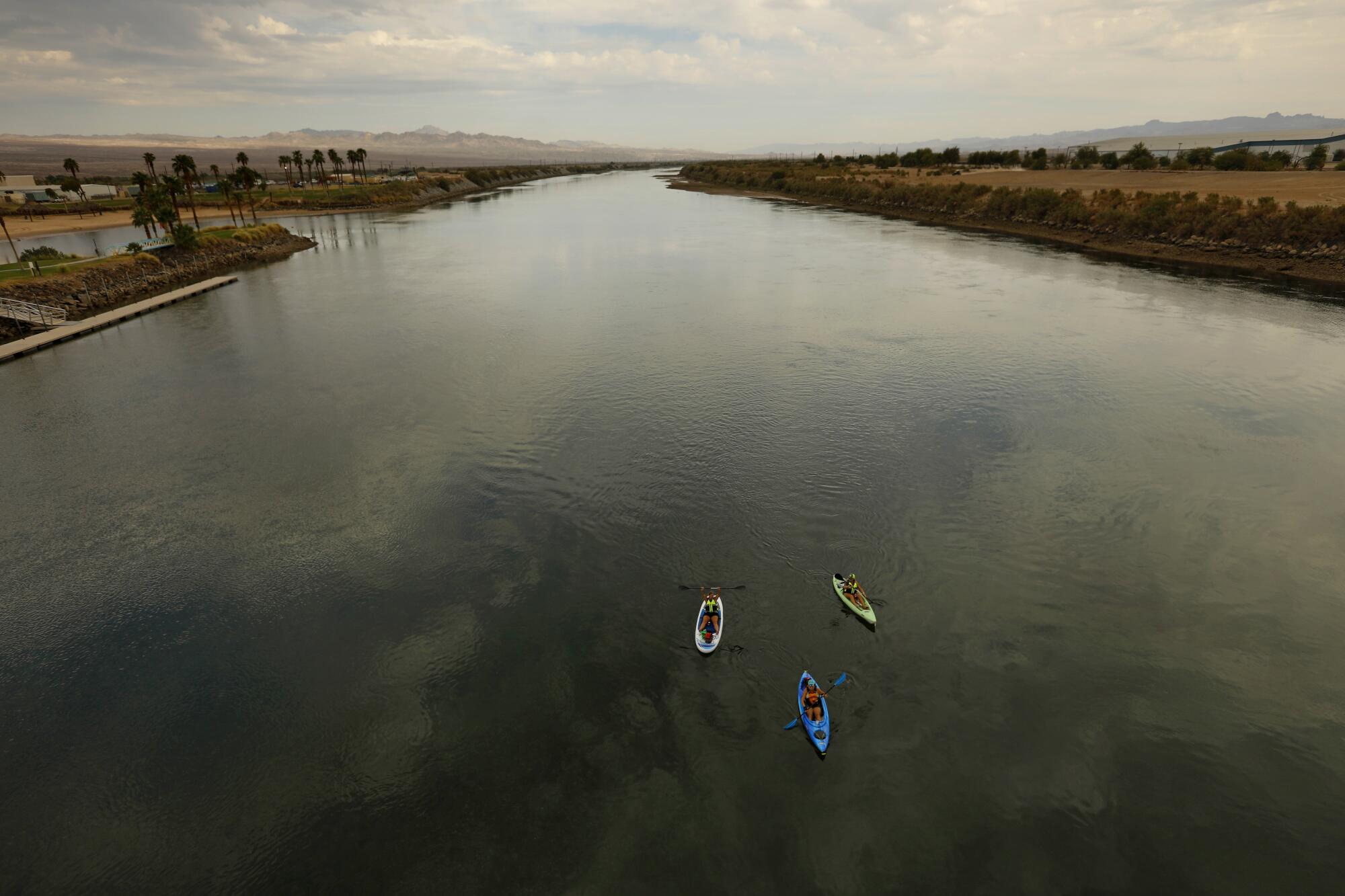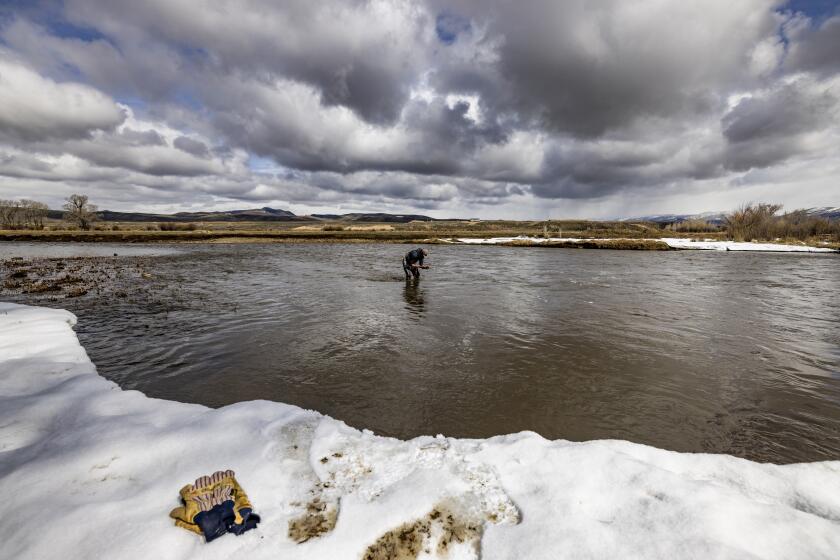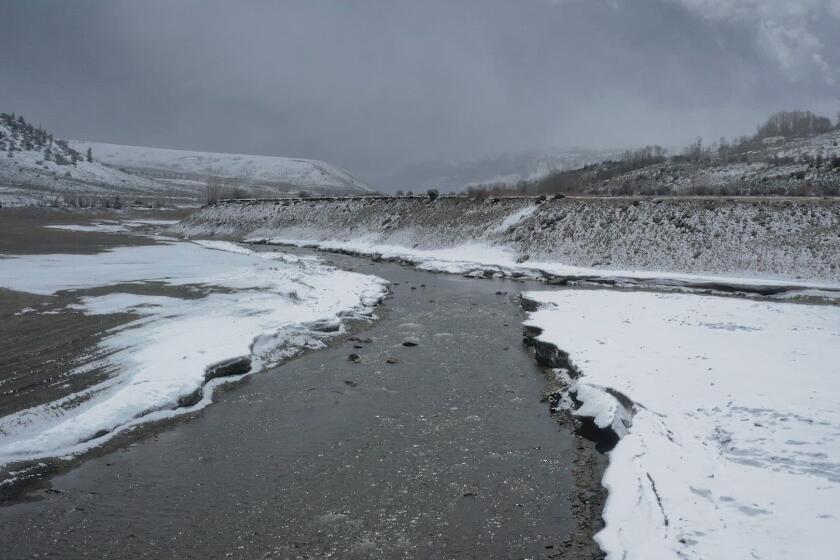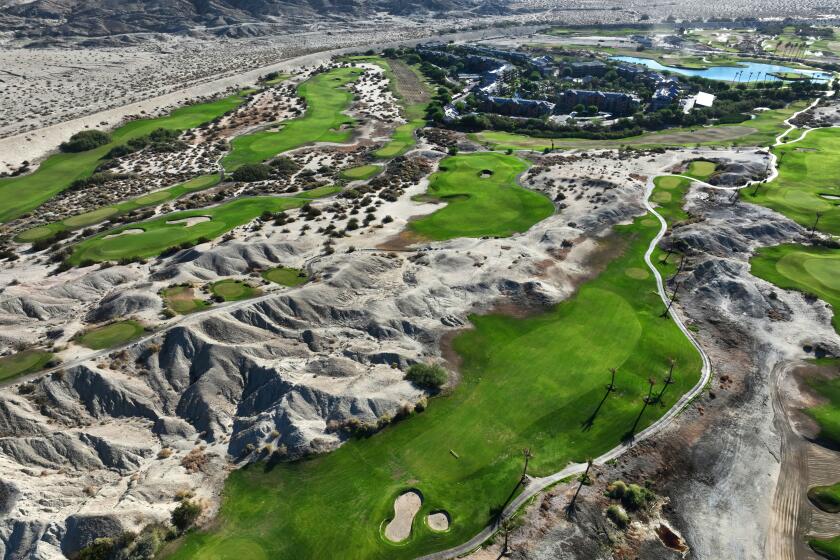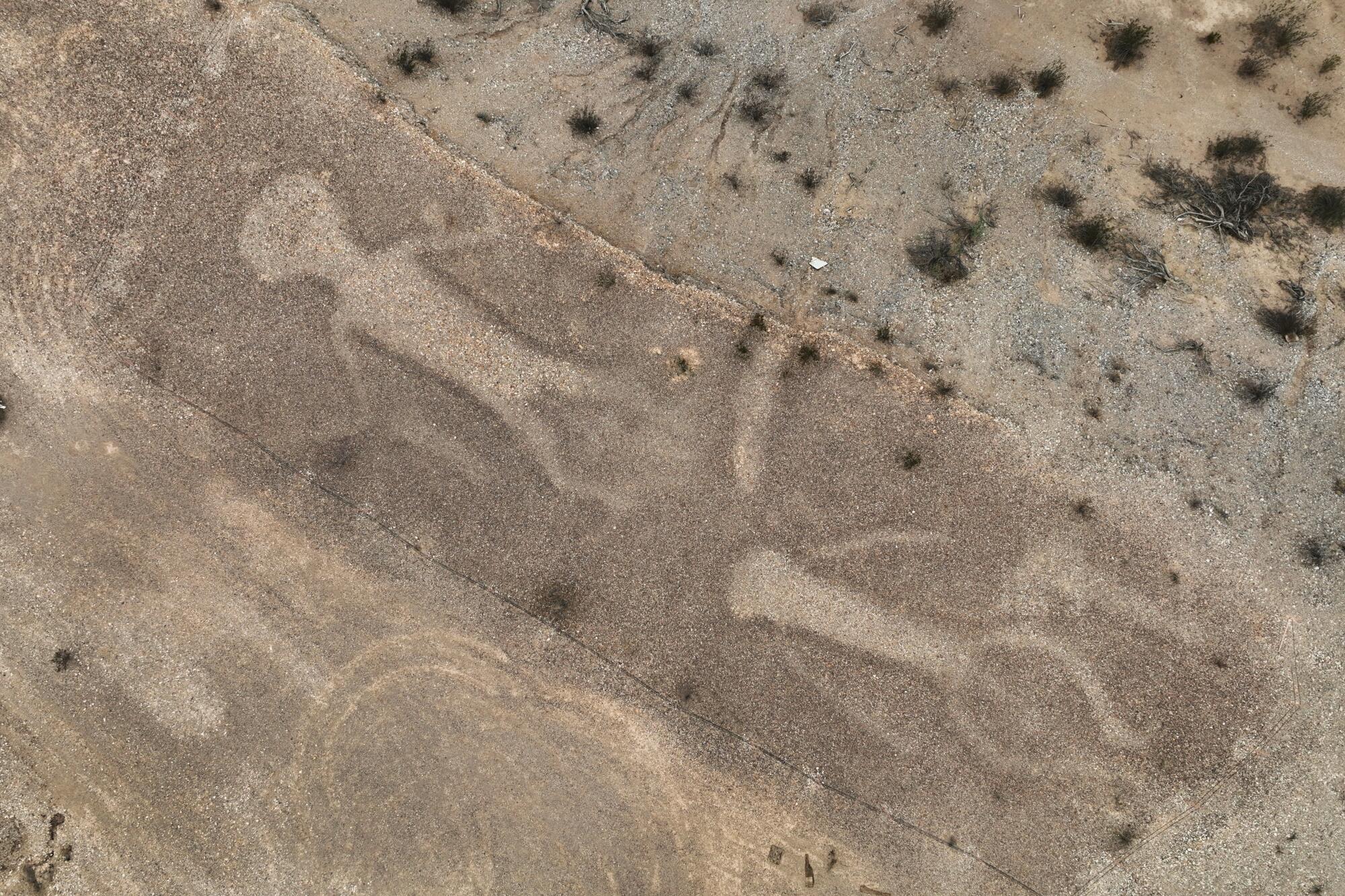
- Share via
FORT MOHAVE, Ariz. — On a bluff overlooking the Lower Colorado River Valley, the ground bears an image of two giant figures. Known as the Twins, these ancient figures are revered by members of the Fort Mojave Indian Tribe, who say they show their people’s deep connection to the land and the river.
“This is a reminder of who we are,” said Nora McDowell, an elder and former chairperson of the tribe. “This is our home. This is what the Creator gave us.”
These and other geoglyphs adorn the desert along the lower reaches of the Colorado River, where Indigenous people flourished long before Europeans set foot in North America.
The Mojave say their traditional name is Aha Makav, meaning the People of the River.

In their beliefs, their place of origin lies to the northwest at Avi Kwa Ame, also called Spirit Mountain. Their ancestors taught them that the Creator made the river and the plants and animals, and put the people here to protect it all.
As a girl, McDowell enjoyed spending summer days at the river, where she waded, played among the tules and admired the tadpoles. She said people here feel a spiritual connection to the river, “that we’re all part of it and we all come from it.”
“It is a living spirit as far as the tribe is concerned. It gives life,” McDowell said. “It really needs to be treated differently.”
Centuries ago, the river swelled with seasonal floods, filling the valley. The people fished in the water and farmed on the silty floodplain, growing crops such as corn and squash.
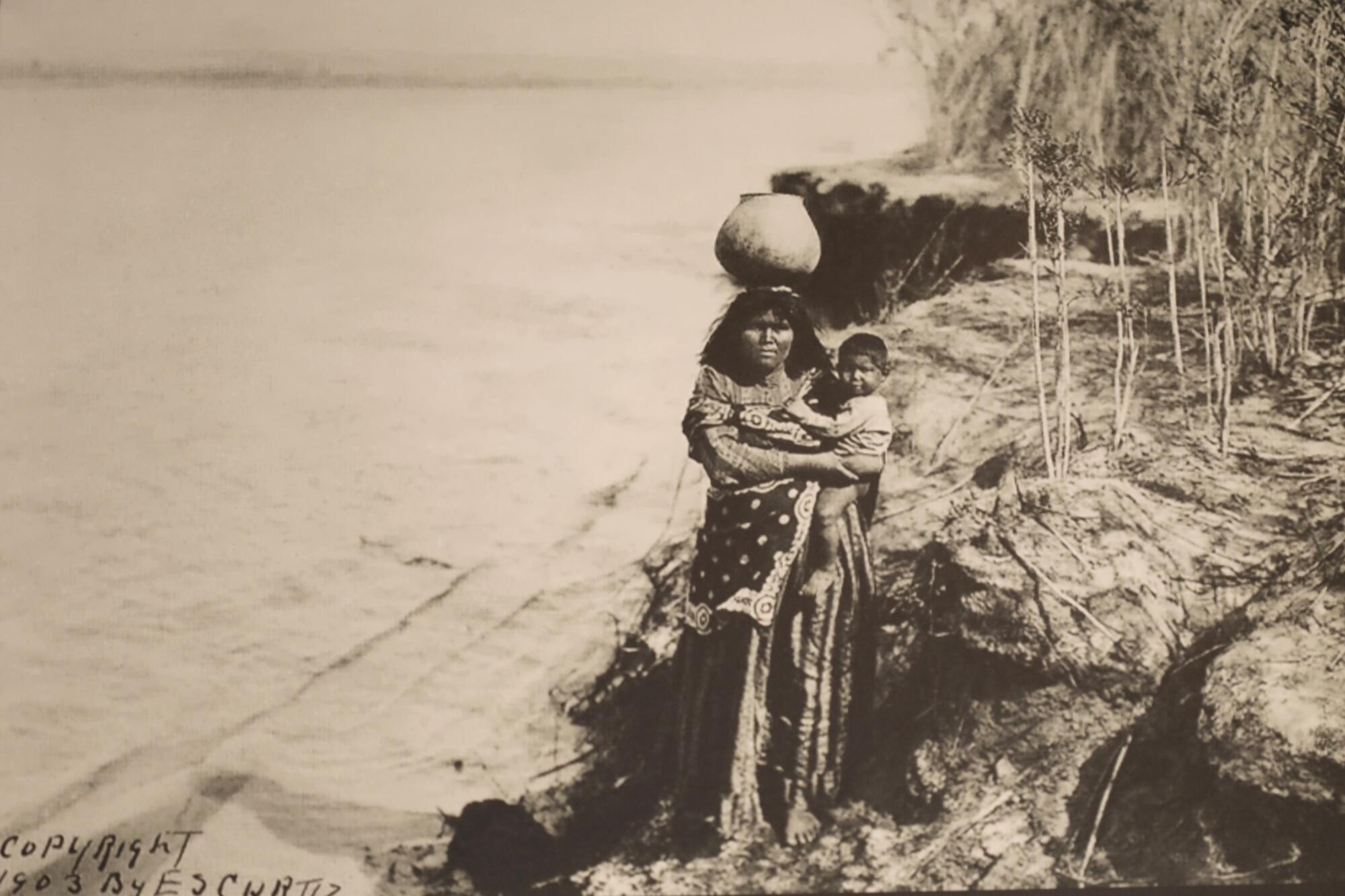
They saw the river and its water as the heart of life, something that belonged to no one.
That began to change in the mid-1800s as white settlers moved west, appropriating land and water.
The American authorities wanted the tribe‘s members to move farther south, but they resisted. The tribe saw the establishment of a U.S. military outpost at a river crossing, and eventually the Fort Mojave Indian Reservation was created along the river, encompassing lands in Nevada, Arizona and California.
The fort later became a boarding school, where children were forced to assimilate and adopt English names.
The Colorado River is approaching a breaking point, its over-tapped reservoirs dropping. Years of drying have taken a toll at the river’s source in the Rockies.
When representatives of seven states signed the Colorado River Compact in 1922, the agreement included only a brief mention that nothing in the compact “shall be construed as affecting the obligations of the United States of America to Indian tribes.”
It wasn’t until 1924 that Congress extended U.S. citizenship to Native Americans by passing the Indian Citizenship Act.
And for decades, leaders of the tribe struggled to secure their water rights.
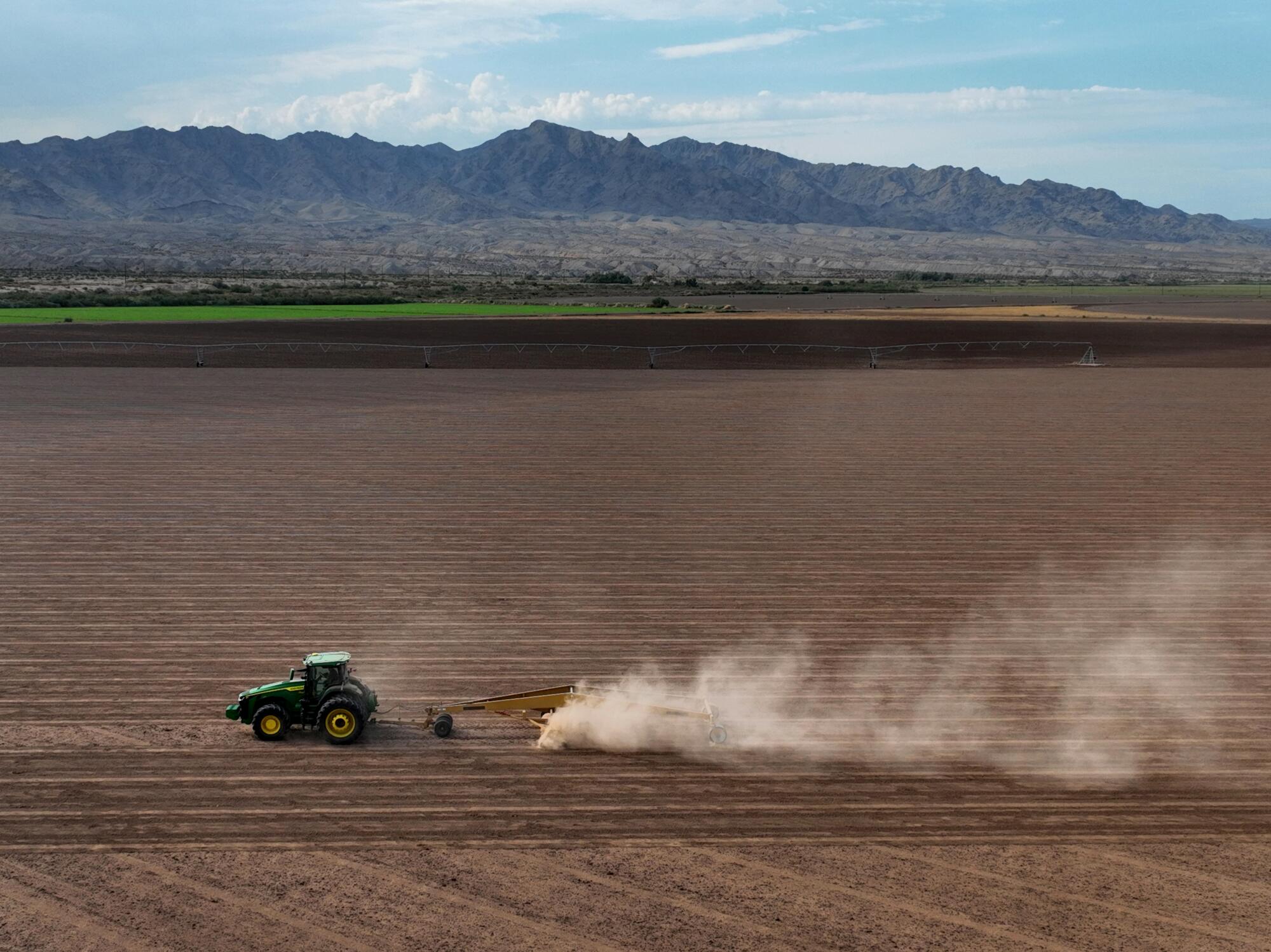
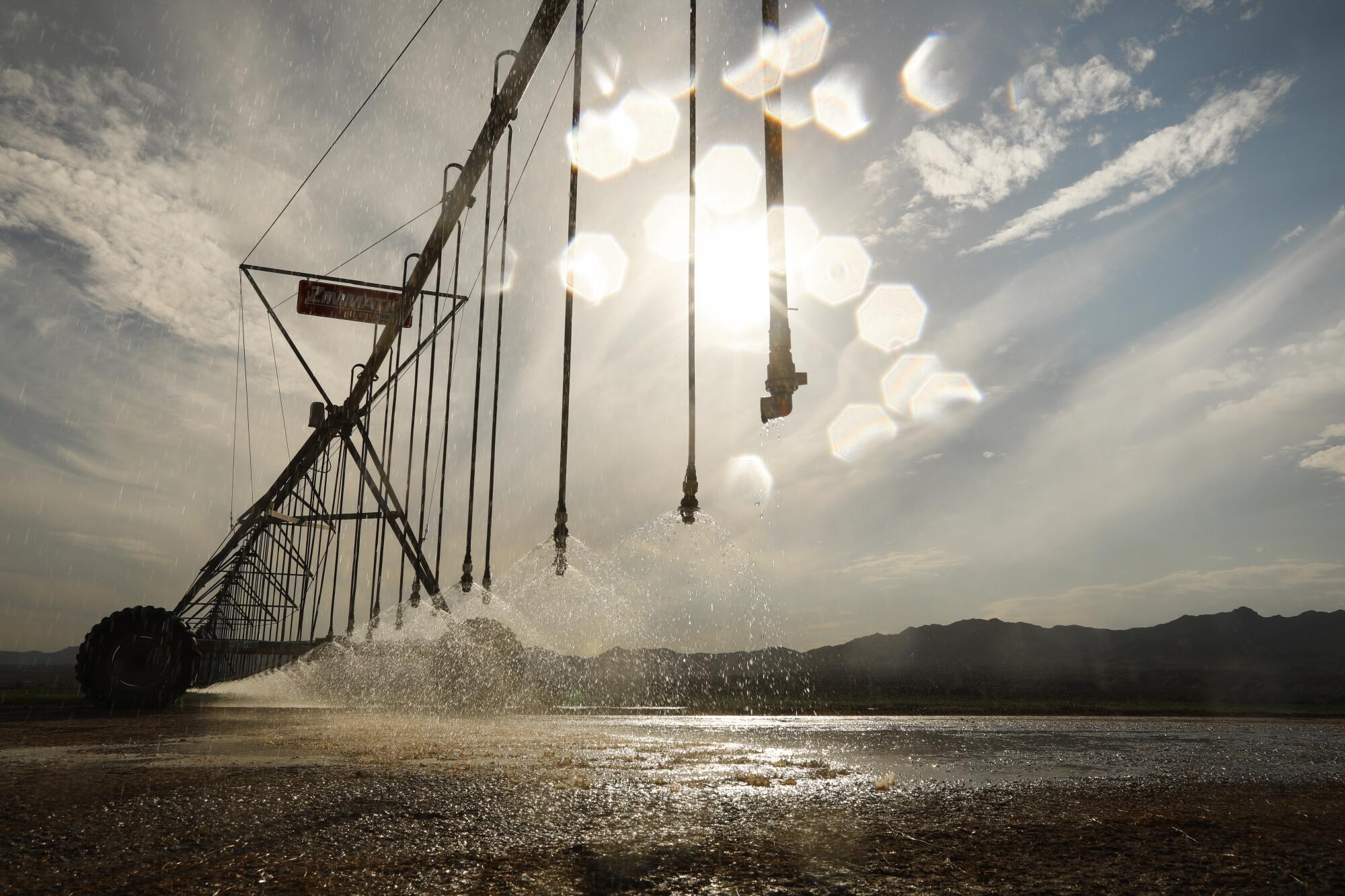
In the 1963 Supreme Court case Arizona vs. California, which settled a dispute over Colorado River water, the federal government intervened to assert that the Fort Mojave Tribe and four other reservations along the river held federally reserved water rights. The court’s decision established a standard for quantifying those rights. And in a 1989 ruling, the Supreme Court finally approved settlements for the water rights of the Fort Mojave and Colorado River reservations.
McDowell, who was the tribe’s elected leader at the time, attended the Supreme Court proceedings and celebrated the end of the long struggle, which her father, Sanford McDowell, had also helped lead years before as a member of the Tribal Council.
As the federal government pushes states to reduce usage of dwindling Colorado River water, Imperial Valley farmers fear a “worst-case” scenario.
“We had to fight hard, and we sacrificed a lot to get the rights that we do have,” Nora McDowell said.
The tribe is entitled to divert about 132,000 acre-feet per year, and uses the water to irrigate fields of alfalfa and other crops, while also pumping from wells to supply communities, two golf courses and two casinos.
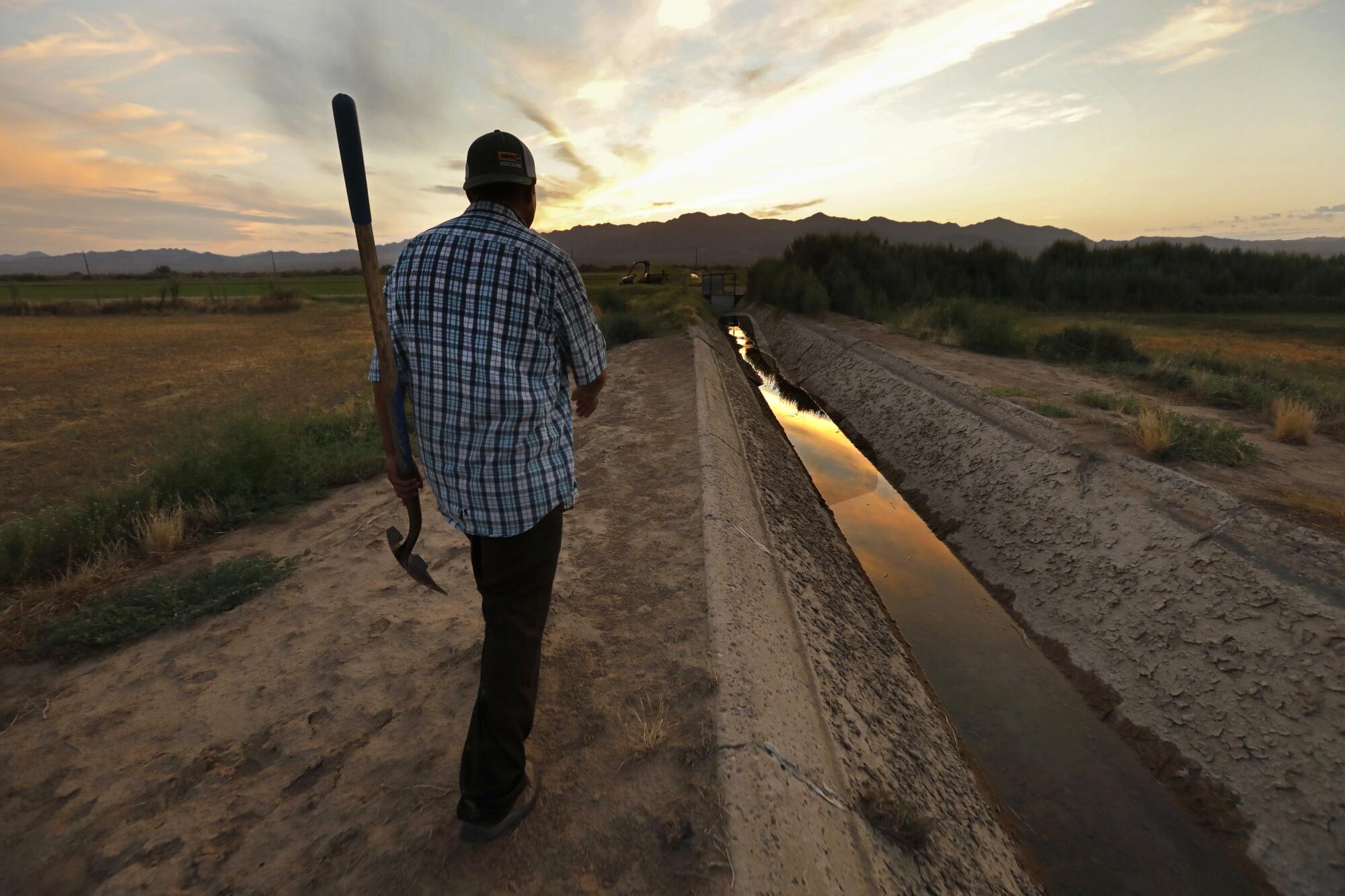
McDowell serves among the leaders of a coalition called the Water & Tribes Initiative. She and others have advocated for tribes to be included in regional Colorado River talks where they previously were largely excluded.
“Hopefully, we will have a seat at the table,” McDowell said. “We should definitely be there.
“The time has come where they have to change the way that they operate and maintain the river,” she said.
Colorado River in Crisis is a series of stories, videos and podcasts in which Los Angeles Times journalists travel throughout the river’s watershed, from the headwaters in the Rocky Mountains to the river’s dry delta in Mexico.
There are 30 federally recognized tribes in the Colorado River Basin. Tribes have established rights to roughly one-fourth of the river’s average supply. But 11 of the tribes still have unresolved water rights claims.
On many reservations, people continue to live with serious water infrastructure deficiencies. In the Navajo Nation, an estimated 30% or more of people live in homes without running water. In Hopi communities, many people have tap water contaminated with toxic arsenic.
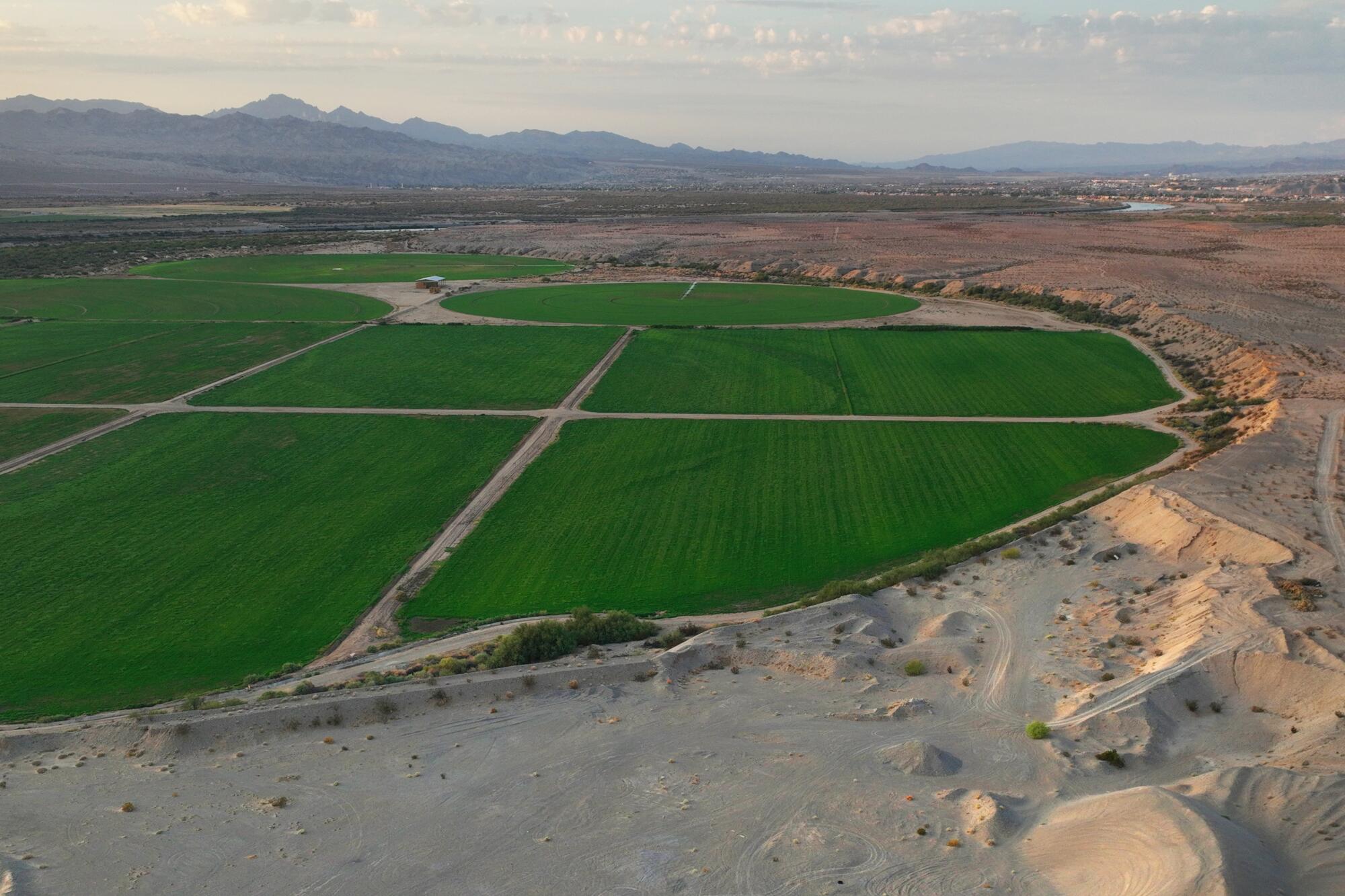
Even with water now scarcer than ever, McDowell said, the federal government has an obligation to ensure the remaining tribes’ water rights are finally affirmed, and to ensure resources for basic water infrastructure.
“They shouldn’t have to wait any longer,” she said. “It’s a human right.”
Some tribes that have substantial water apportionments, such as the Gila River Indian Community in Arizona, have stepped forward with offers to reduce water use in exchange for compensation. Leaders of the Colorado River Indian Tribes recently secured passage of federal legislation that allows them to lease a portion of their water to other areas.
That bill was signed by President Biden along with other legislation benefiting Arizona tribes, including a water rights settlement for the Hualapai Tribe, which will receive water from the river and $312 million for water infrastructure.
Leaders of the Fort Mojave Tribe say they plan to continue using their water on their lands. They say their parents and grandparents told them that land without water is nothing. But the older generations also stressed the river’s importance as much more than a water supply.
“The old people used to say, if you go down to the river and you just sit there, the river will talk to you. Because it’s a living spirit,” said Paul Jackson, a tribal elder and cultural artist.
When Jackson was growing up, he and others would hold their breath, go under and take a rock in their arms to anchor themselves on the bottom.
“You would see fishes going by,” he said with a chuckle.
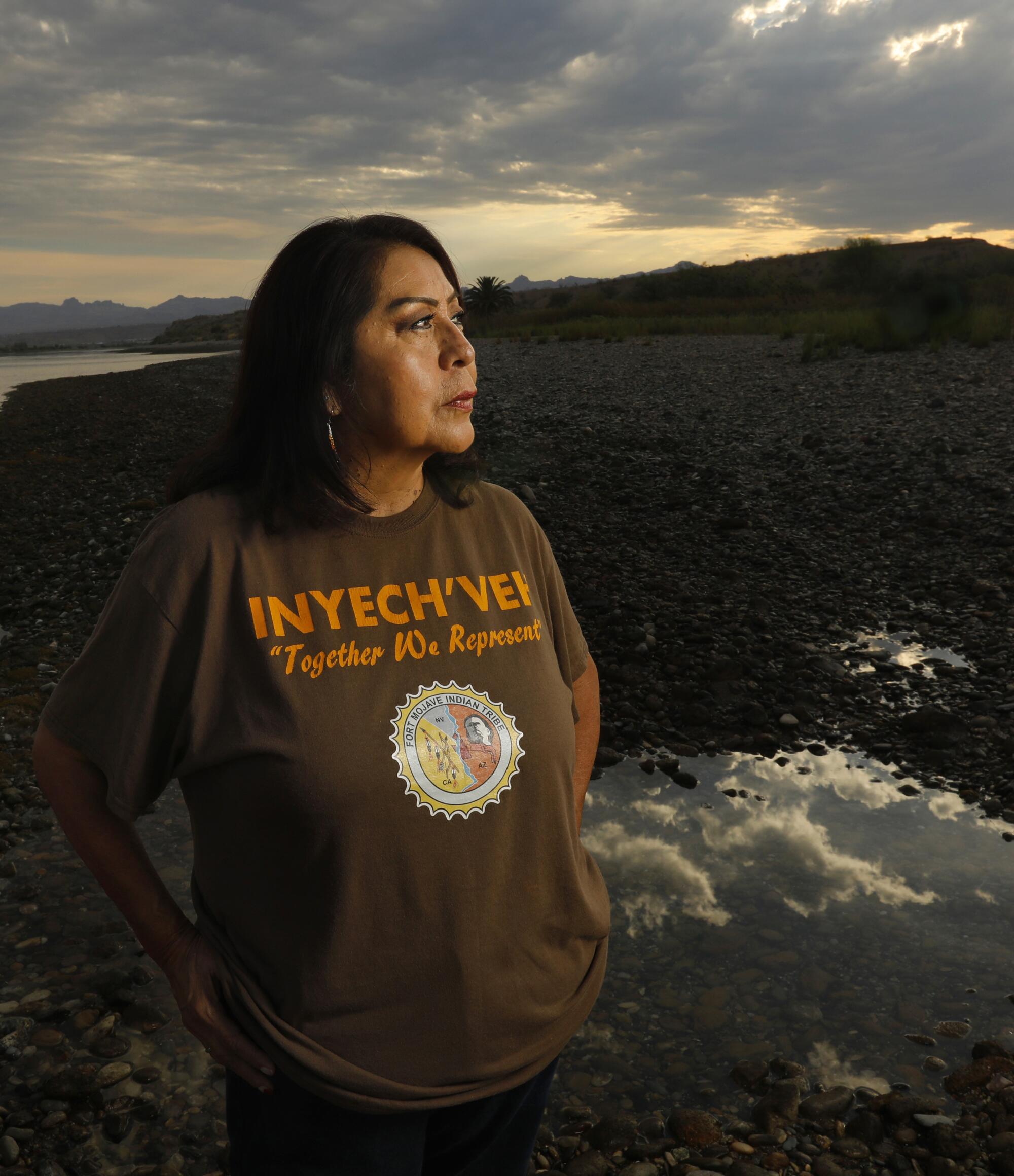
One morning, McDowell walked down to the water’s edge with Linda Otero, the director of the Aha Makav Cultural Society.
The river here runs in a channel enclosed in stretches of rocky riprap barriers, which were built decades ago after floods washed out homes. But near the ruins of the old fort, natural riverbanks remain.
In the Coachella Valley, water continues flowing to lakes and golf courses, even as the Colorado River reaches new lows. Critics say it’s time to limit heavy water use.
Otero said that when she was growing up, she remembers the river was much wider and deeper. She would spend summers swimming.
“You just dived in there and it was so deep,” Otero said, standing on the bank.
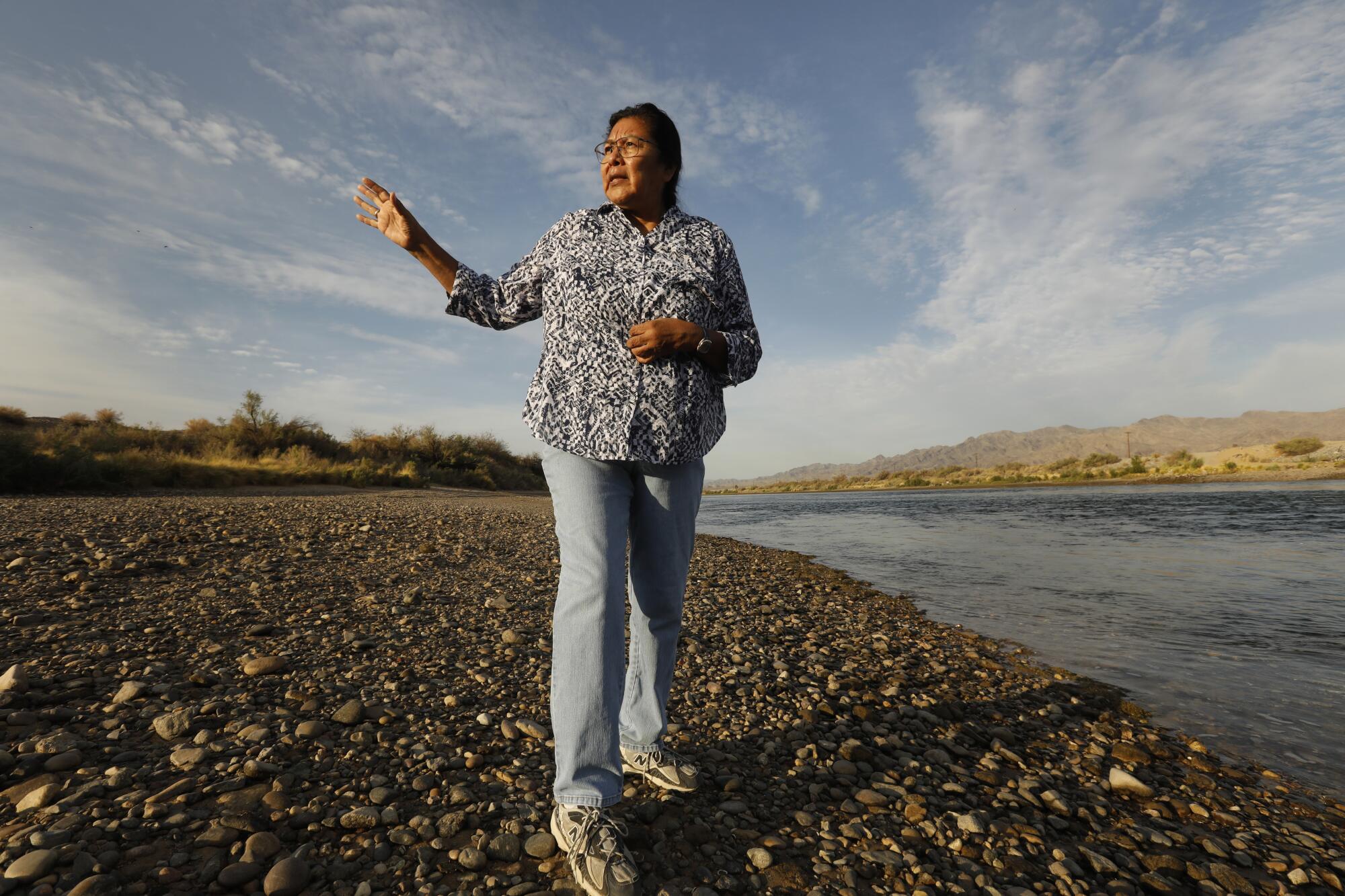
“Now, it’s like a stream,” Otero said. “But we still can connect to the river. It’s who we are.”
McDowell said she worries the river could keep declining and potentially run dry. She said that along with climate change and the overuse of the river, an underlying problem is the mindset of treating the water as property.
“Nobody should own that river, but the way they did it a hundred years ago, that’s the story and the legacy that we live with,” McDowell said.
She said she believes in the rights of nature, that the river should have its own right to exist.
Las Vegas has dramatically cut water use by targeting grass. Its water czars are pushing for bigger changes to fix the Colorado River’s water deficit.
“We don’t treat it like a commodity, because we know what the river is, and what it gives us is life,” McDowell said.
“We need to protect that river,” she said. “We all have that responsibility to make sure it’s alive and that it’s healthy.”
McDowell said restrictions need to be placed on water use, and the way the river is managed and used needs to be rethought. She said she’s hopeful that people will be able to change course before it’s too late.
“If we keep operating it the way we are, and we keep demanding the uses of it and treating it like a commodity, it’s going to do what it’s doing right now,” McDowell said. “Something’s got to change. And people got to make that change happen.”
